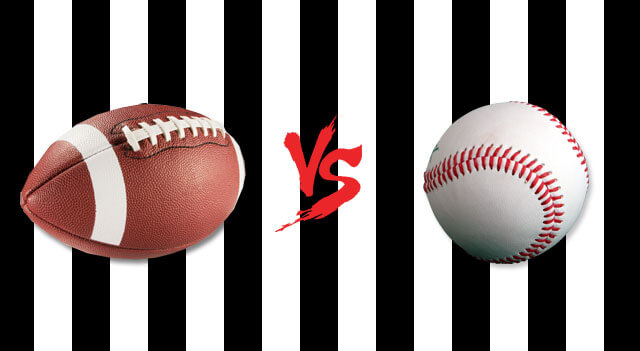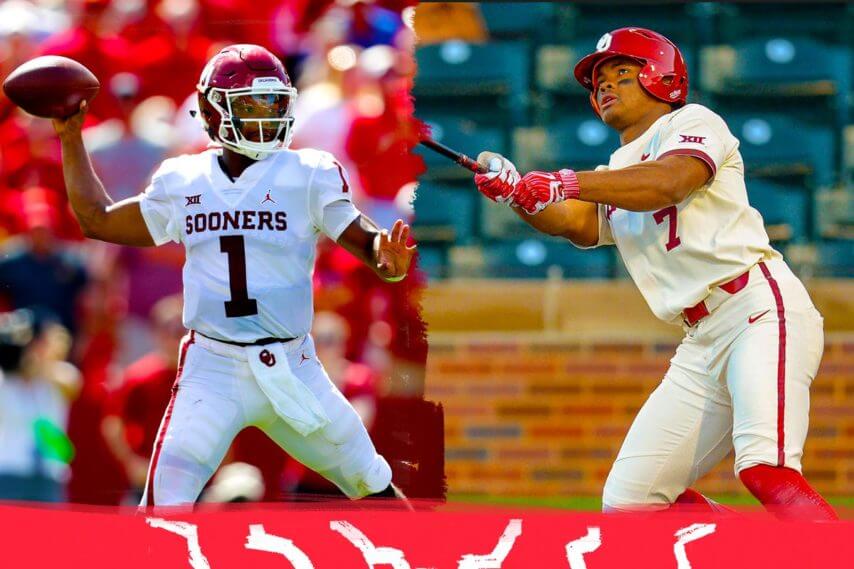Baseball versus football – which is America’s favorite pastime? The great American sports divide runs deep, with passionate fans on both sides of the debate. On one hand, baseball is steeped in tradition and considered nostalgic – the game that defined summer for generations. Football, on the other hand, brings high intensity action and hard hits that thrill spectators today. Baseball draws bigger crowds to its stadiums, yet football dominates television viewership and revenue. The baseball season spans spring through fall, while football is mainly contained to fall and winter.
Which sport truly deserves the title of “America’s favorite?” This debate involves factors like history and tradition, economics, global reach, strategy, player safety, and more. While there may not be a definitive answer, understanding the key differences between these two beloved sports can shed light on their cultural impact and popularity. Baseball might have longevity on its side, but football has momentum. This article will analyze the cases for baseball vs. football in depth to better understand the contrasts between America’s two giants of sport.
Strategy and Complexity

Baseball requires far more strategic thinking than football. Baseball managers and players must constantly adjust based on the situation – the inning, score, runners on base, and even the count. With each pitch, numerous options emerge for both the pitcher and batter to respond. The pitcher chooses what type of pitch to throw, its velocity, location, and movement. The batter decides whether to swing, take, or foul off pitches based on the situation. Additionally, teams position defenders and shift them during at-bats based on hitters’ tendencies and spray charts. There are layers of strategy on every pitch and play.
Contrast this to football, where many plays are simply called by the coordinator and executed by superior athletes. Football certainly involves strategy in play calling, personnel packages, and play design. But once the ball is snapped, success is more about sheer power and speed than guile. As Bill Parcells famously said, “Football is basically an emotional game. It’s not like baseball or basketball or hockey.” Football is often won simply by the team with better athletes, whereas baseball comes down to strategic decisions within each play.
Pace of Play
Baseball is often criticized for having a slow, leisurely pace compared to other major sports like football. However, this more relaxed tempo is part of baseball’s charm. There is time during a baseball game to socialize with friends, enjoy a hot dog or beer, and take in the atmosphere. As one fan notes, “In baseball the ball moves faster than most physical objects ever will but the urgency, intensity and general pacing isn’t there”.
In contrast, football is intense bursts of action followed by extended breaks in play. While exciting, the start-and-stop nature of football can be draining for fans. There is little time to relax or chat before the next snap. Additionally, lengthy commercial breaks and timeouts frequently disrupt the flow of football games. As one Reddit user commented, “Football pace is fine, the 1.5 hours of commercials per game are not”.
So while baseball may seem slow at first, its leisurely pace is a feature that allows fans to enjoy the game’s social aspects. Football’s intense pace certainly has its thrills, but the frequent interruptions can diminish the viewing experience. Ultimately, pace comes down to personal preference.
Season Length

Baseball has one of the longest seasons of any professional sport, with a 162 game regular season schedule for each team spanning from early April to late September/early October. This means baseball fans can enjoy games for the better part of six months. In contrast, the NFL season consists of just 16 regular season games for each team from September to December.
While the NFL does have playoffs extending into January/February, the brevity of the regular season provides less opportunity for fans to engage. Baseball’s marathon regular season allows more time for teams to develop an identity and enables fans to closely follow pennant races. The long season also provides a larger sample size of games for statistical analysis.
Ultimately, baseball’s expansive schedule offers fans more opportunities to enjoy the game.
Statistics
Baseball has developed a deep statistical history over the decades, with numerous metrics to analyze every aspect of the game and player performance. As this Quora thread discusses, baseball accumulates statistics for all players on offense and defense, while only a handful of football players on offense and defense rack up individual stats. Baseball fans love to dive into the numbers, debate players’ Hall of Fame worthiness based on stats like WAR, OPS, home runs, and RBIs, and compare eras using adjusted metrics.
As noted in this Wall Street Journal article, the average MLB game has 30,345 fans, providing a large and passionate audience for baseball’s statistical analysis. Football certainly has analytics, but they tend to focus more on team performance rather than individual player stats. Overall, baseball’s longer history and greater emphasis on individual performance have allowed more sophisticated baseball statistics to develop compared to football.
Player Safety

While football is often perceived as a dangerous contact sport, baseball actually has a higher fatality rate among children ages 5-14, with 3-4 deaths per year attributed to baseball injuries. The repeated pitches and throws required in baseball put strain on arms and shoulders, and the hard balls can lead to fatal head and chest injuries when hit at high speeds.
Football has received growing scrutiny for its association with concussions and chronic traumatic encephalopathy (CTE), a degenerative brain disease. However, baseball players are on the field 10 times more often than football players over a season, leading to gradual wear and tear. While football tackles are more intense, baseball involves repetitive stress on joints and muscles over many more plays per game and practices.
Overall, baseball results in more player injuries and fatalities each year, even though football garners more attention for hard hits and concussions. Both sports involve risk, but the frequency of play contributes to baseball overtaking football in annual injuries.
Costs
Baseball is generally more affordable to play compared to football. According to the source, the average annual cost for a child to play football is $2,124 while the average cost for baseball is only $714. The expensive equipment like helmets and shoulder pads required for football drive up costs compared to the relatively minimal equipment needed for baseball.
Additionally, football requires large stadiums and facilities which are costly to construct and maintain, while baseball can be played on a basic field. This article highlights how the pay-to-play model of many youth sports impacts accessibility, but baseball remains one of the more affordable options. With lower costs, baseball can be played recreationally by children from various socioeconomic backgrounds. The expensive requirements of football unfortunately preclude many families from participating.
Overall, baseball’s minimal equipment and facility needs make it a more accessible and affordable sport compared to football.
Global Reach

While American football remains primarily popular in the United States, baseball is gaining a truly global following. Countries such as Japan, Cuba, Dominican Republic, Korea, and Taiwan have passionate, devoted baseball fans and leagues. In fact, baseball is the most popular sport in Japan, with an estimated 30 million fans.
Baseball’s international governing body, the World Baseball Softball Confederation, has over 200 member countries and territories. In contrast, American football remains centered in North America, with minimal interest elsewhere. Baseball’s rising global popularity demonstrates its broad appeal across cultures.
Youth Participation
Youth participation trends show baseball gaining popularity over football in recent years. According to the analysis, youth baseball participation has been steadily rising over the past decade, with over 15 million youths playing baseball in 2018. At the same time, reports show that youth football participation has been declining, with over 2 million fewer youths playing tackle football in 2018 compared to 2009.
Several factors may explain these diverging trends. Rising safety concerns over youth football and greater awareness of risks like CTE likely contribute to more parents steering their kids toward baseball. The faster pace and more dynamic gameplay of baseball compared to football also resonate with today’s youth.
Furthermore, the lower costs and less intensive equipment needs of youth baseball make it more accessible. As concerns over football safety mount, baseball offers a safer alternative that engages kids through quick action and intricate strategy. Its rising youth participation reflects baseball’s strengths in appealing to modern young athletes and parents.
Conclusion
Baseball and football represent two sides of American culture. Baseball is seen as embodying tradition, nostalgia, strategy, and community, while football reflects power, specialization, violence, and spectacle. The debate over which is the true “American pastime” reveals the tensions at the heart of American society – between brain and brawn, strategy and force, leisure and work.
While baseball may be declining in popularity, its legacy endures as a touchstone of simpler times and national tradition. Football may rule today thanks to media hype and flashy presentation, but baseball still embodies a purity of character and community that can’t be matched.
Ultimately, this debate speaks to opposing impulses within America – the cerebral versus the brutal, the measured versus the excessive – and how the pendulum swings between these poles over time.








